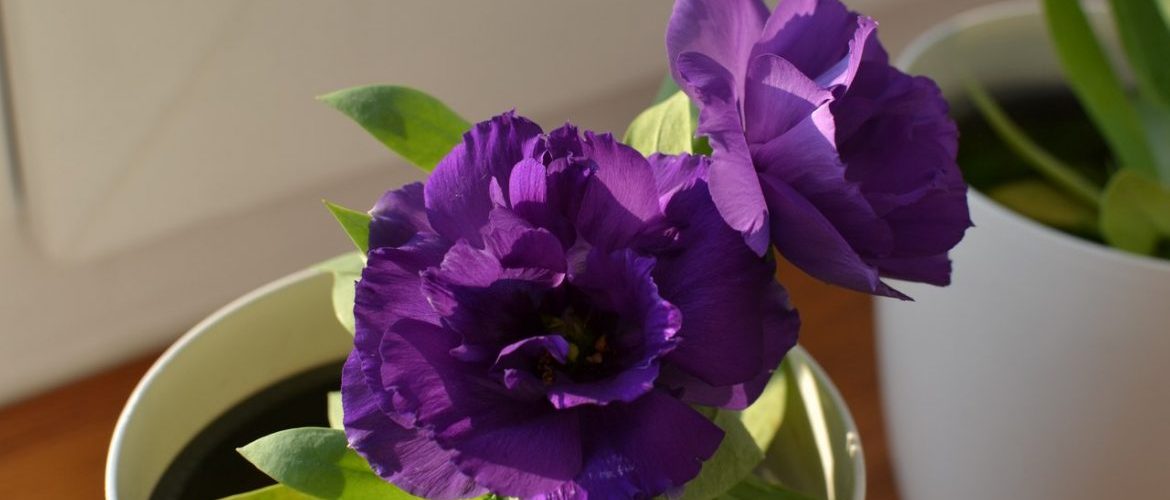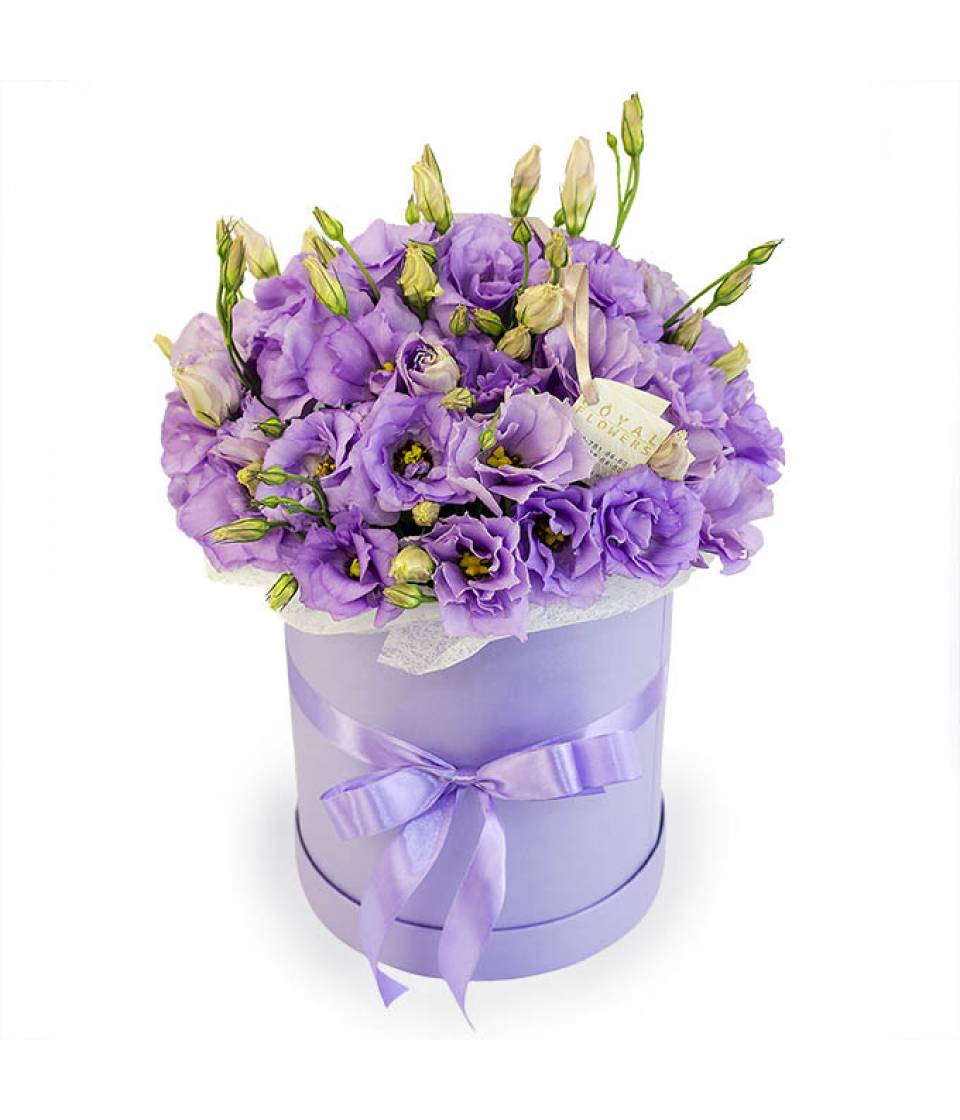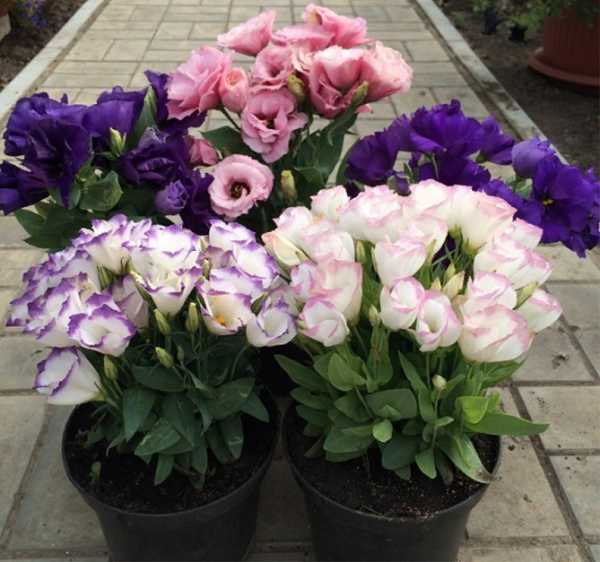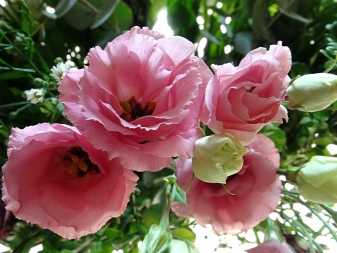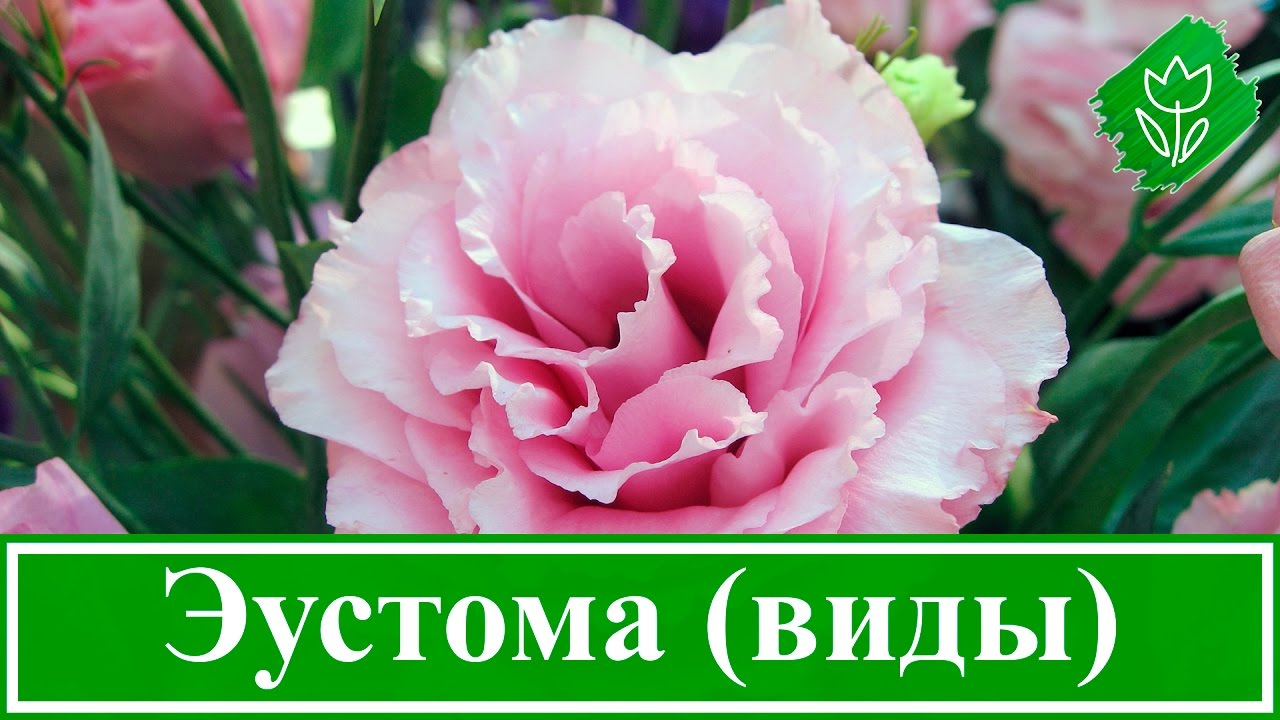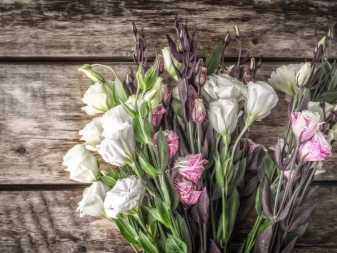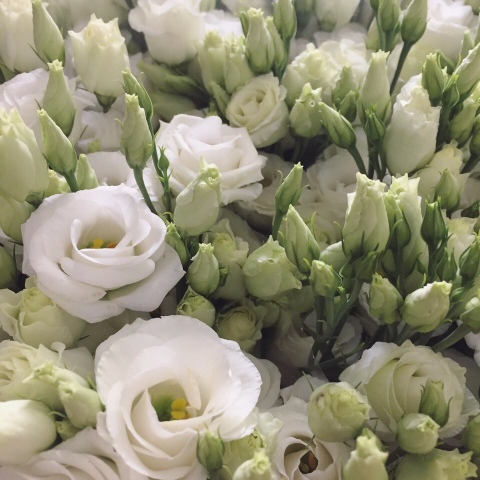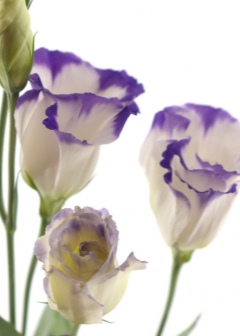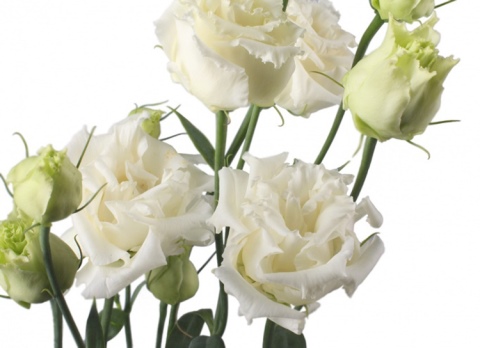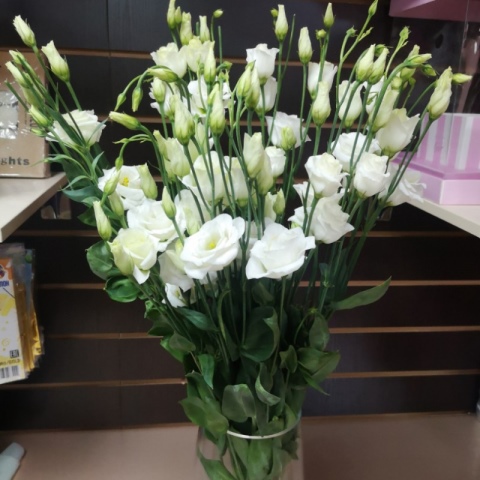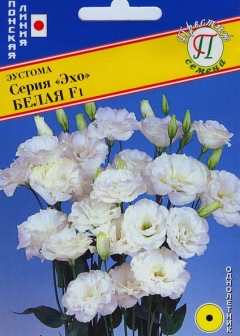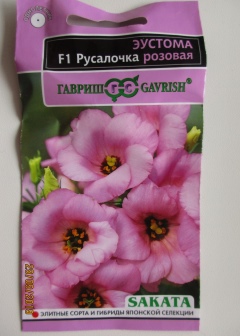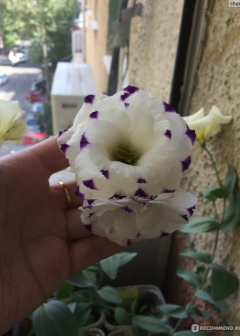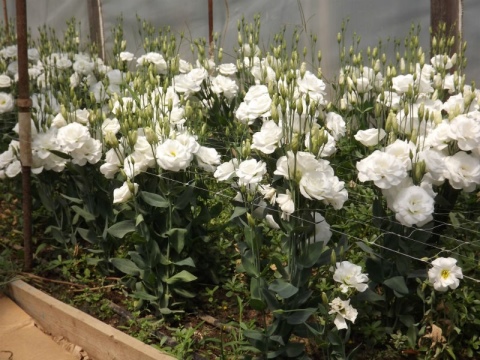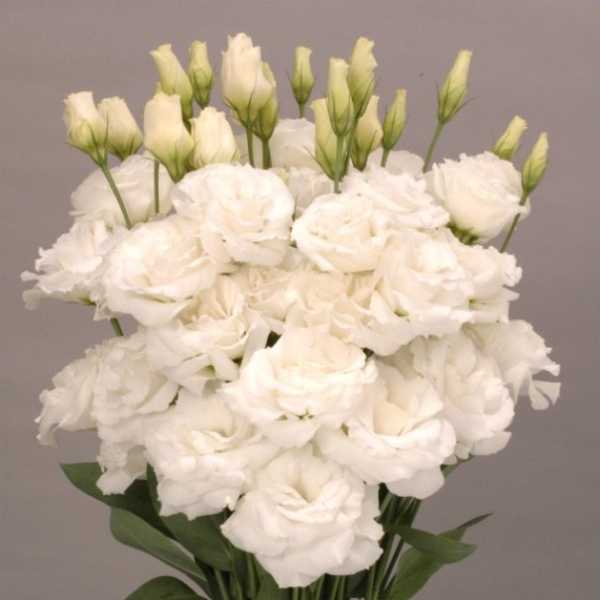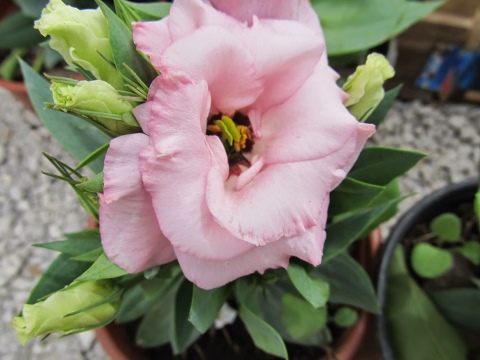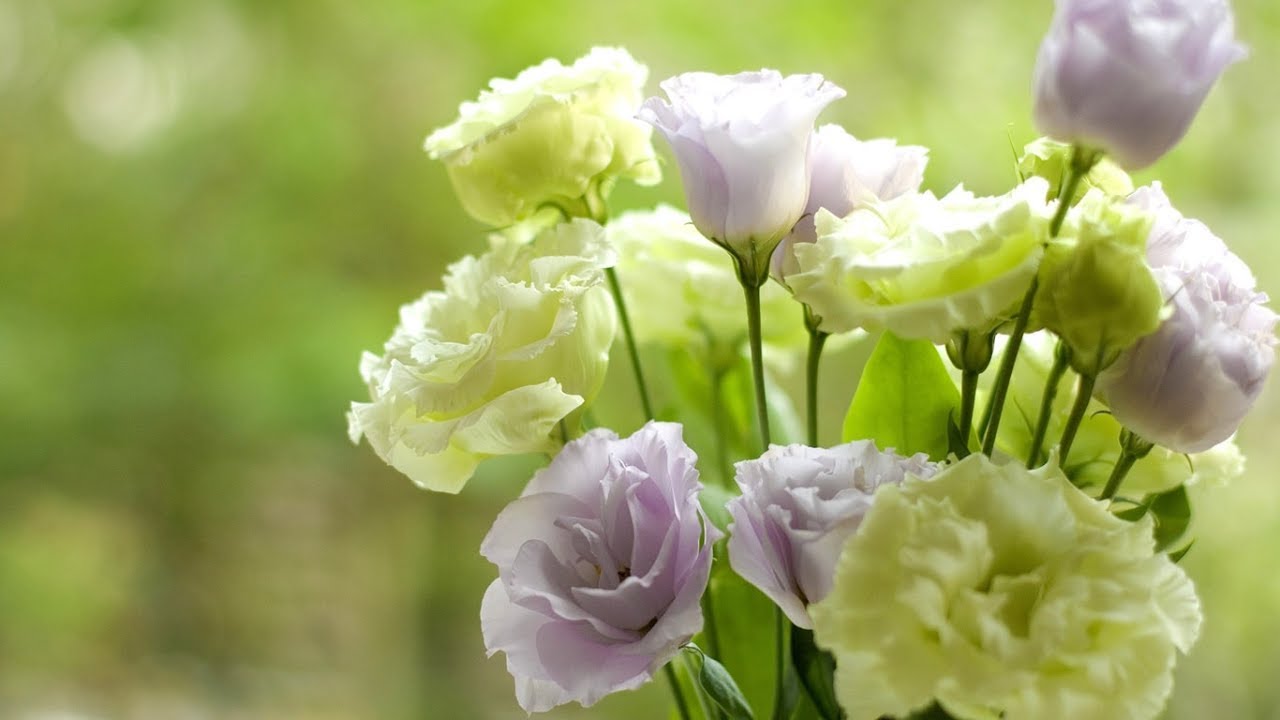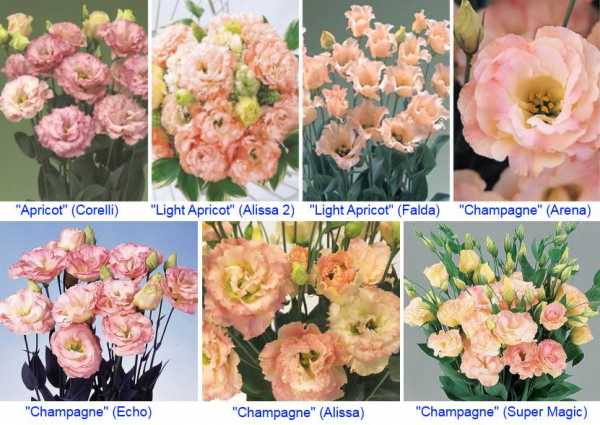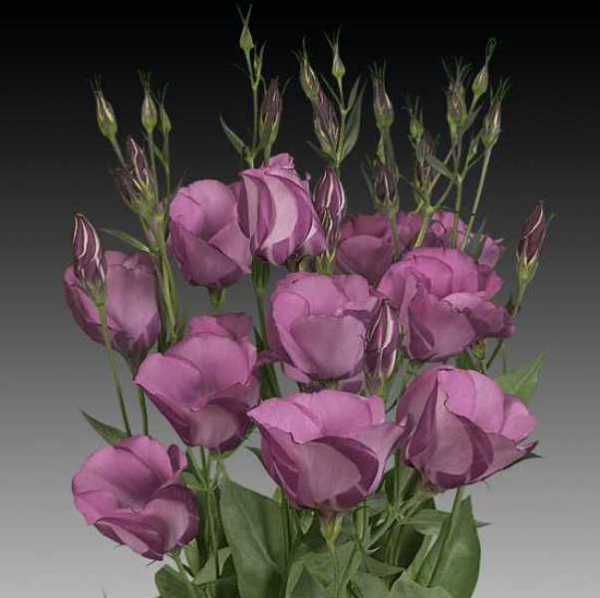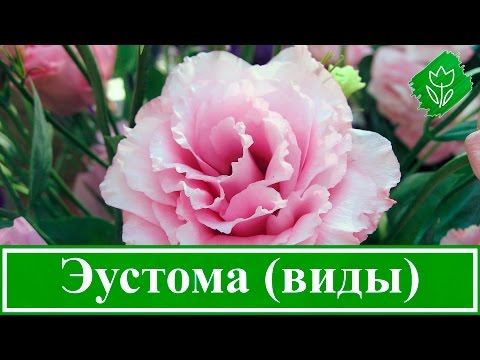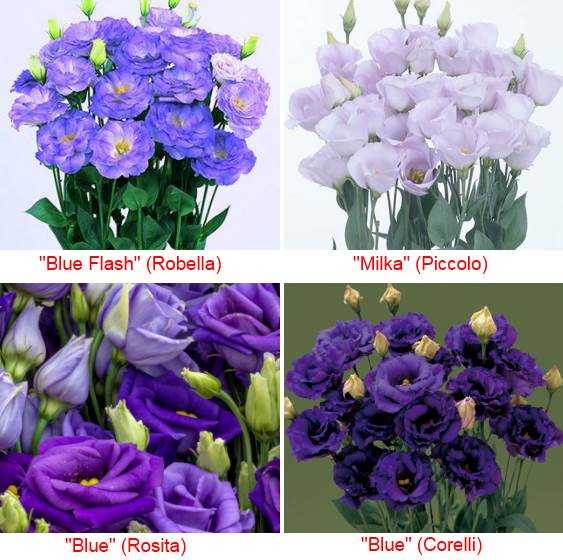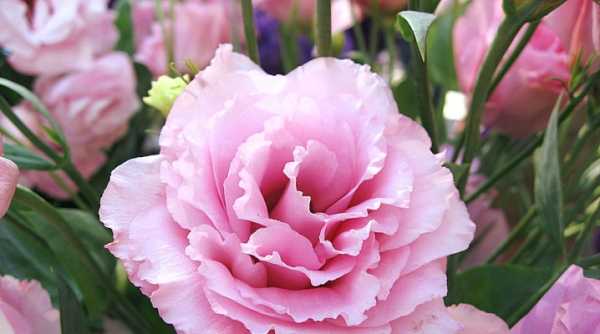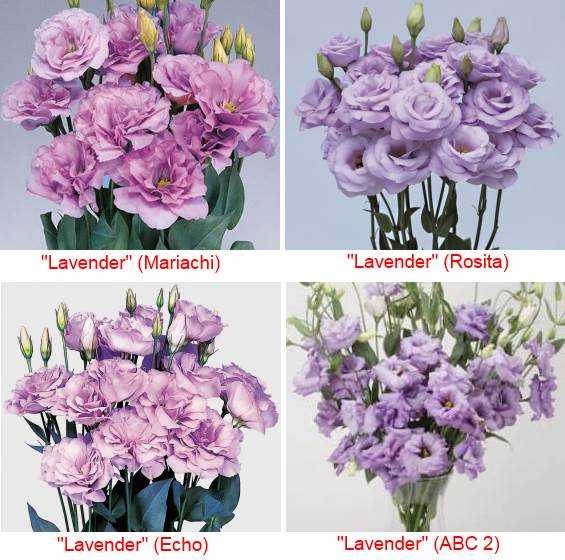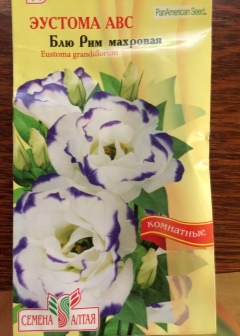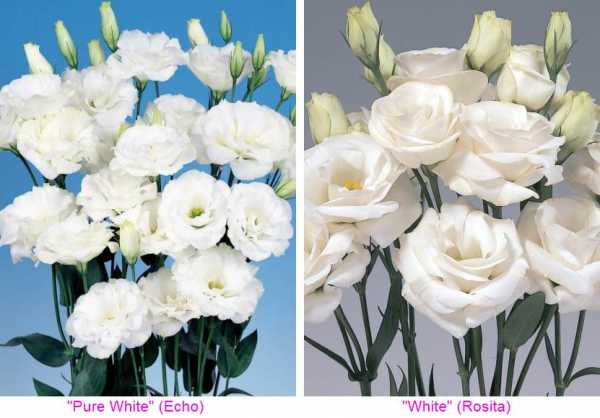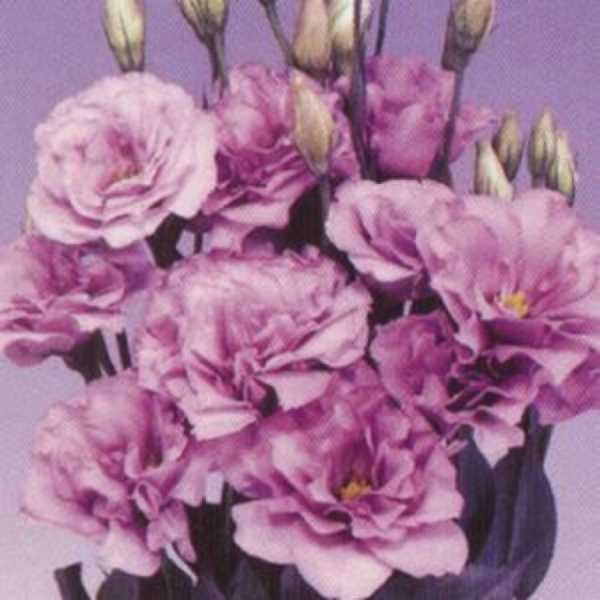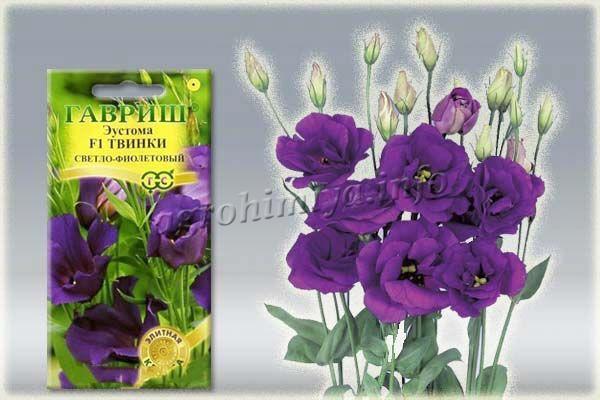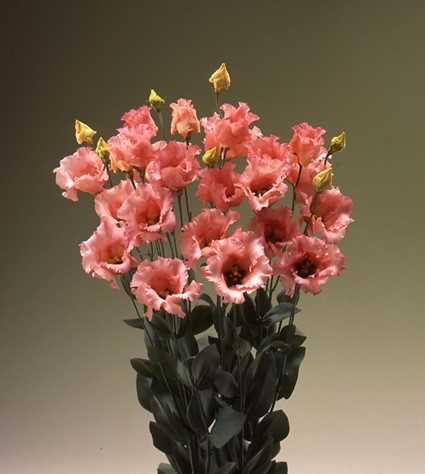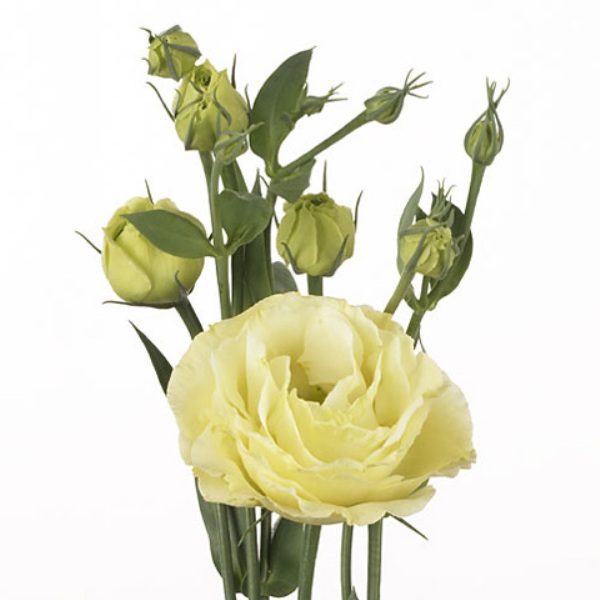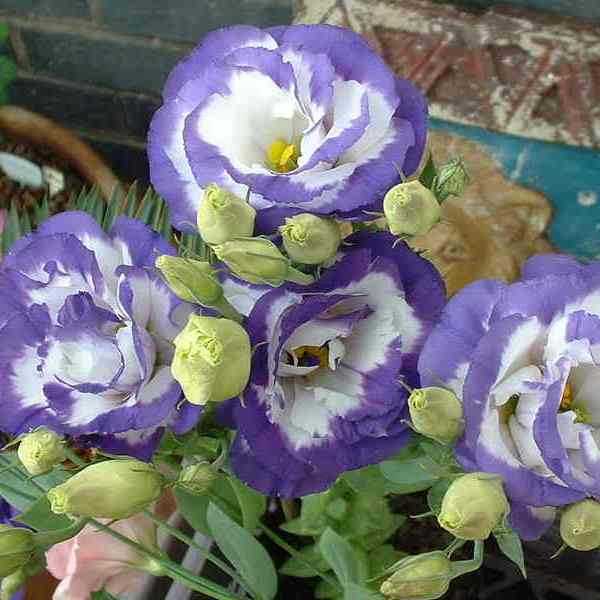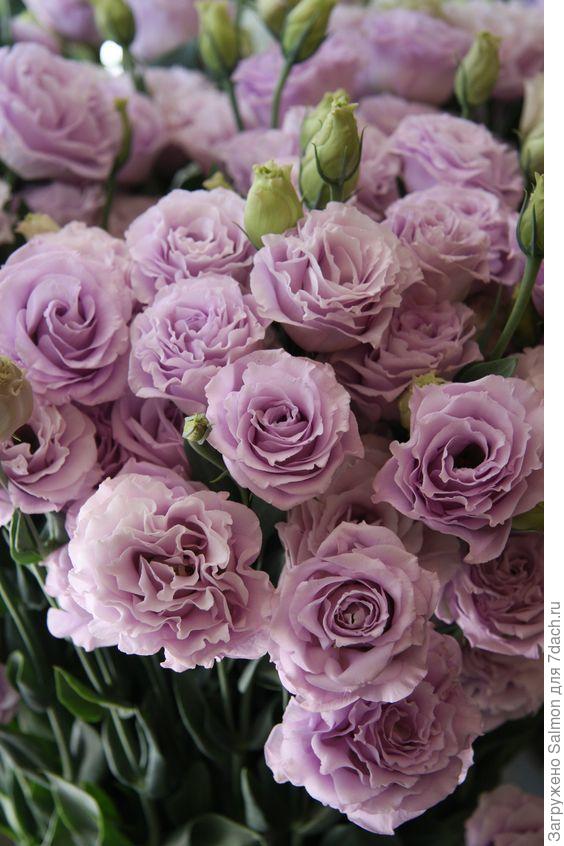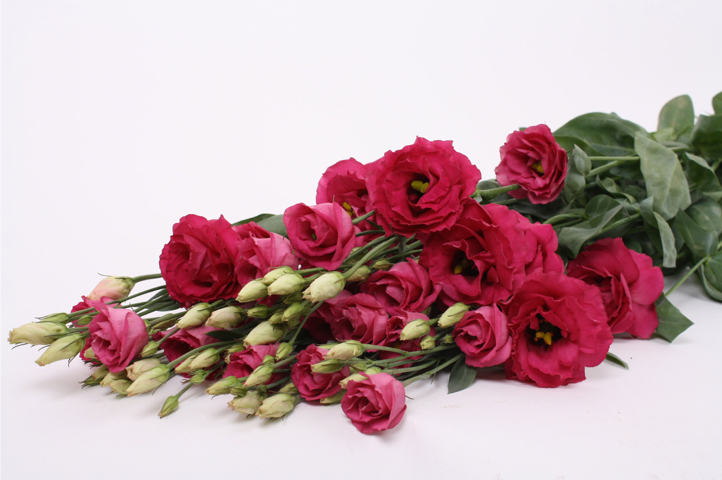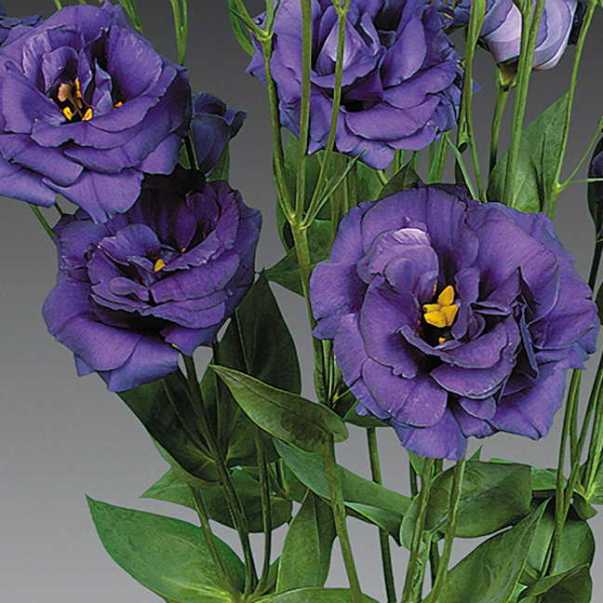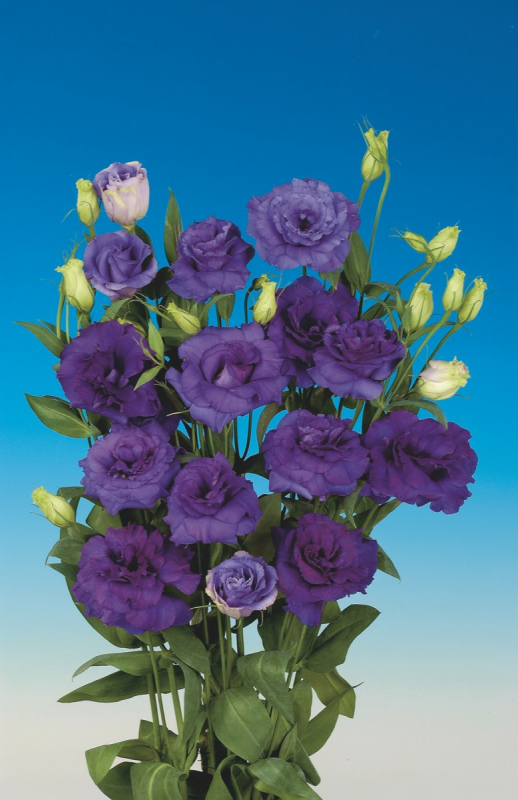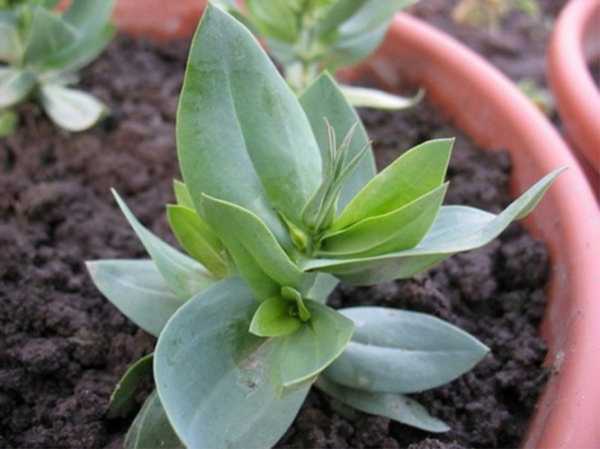Brown and burgundy
In addition to popular inflorescence colors such as white, pink or purple, there are eustoma varieties with a rather amazing palette of colors. We have selected several unusual varieties for you.

"Deep Brown" in the "Rosanne 2" series. Tall variety with a standard double flower, but a rare color. The color translates to "dark brown" but is described as lavender brown.
"Brown" in the "Rosanne1" series. This variety is from the same series, only with the first flowering group. It is difficult to describe the color palette of the inflorescence in one word. You can say lemon color, turning into a light brown shade with lilac notes or close to burgundy color.
Description
Lisianthus is a perennial, but some gardeners grow it as an annual plant. In nature, there are many different flower species that attract with their beauty. Some are unpretentious and do not require much effort when growing, but some are worth working hard to achieve the desired result. Eustoma is just that case. Most florists are fascinated and attracted by the appearance of flowers, respectively, they are interested in breeding and caring for them.

Lisianthus - simple and elegant
The flowers of the plant are very reminiscent of unopened rosebuds. They are small in size from 5 cm in diameter, and are presented in a wide variety of colors: from light to dark colors, and there are even two-tone colors. They can also be plain or terry. Lisianthus petals appear very delicate and silky. The stem is thin and graceful, there are many flowers on it that open sequentially, although there are also varieties where flowering occurs simultaneously, forming a beautiful bouquet. The leaves are distinguished by a semi-oval shape, with a waxy bloom, silvery-gray or blue-green in color. To date, breeders have achieved great success in creating new varieties, where the stems reach a meter in height, and the so-called potted varieties are no exception, their maximum height is about 30 cm. There are flowers with an incredible aroma.
Historical data
The history of Lisianthus is very long, it dates back to the 19th century. The native side of the eustoma is the southern countries of North America. In 1806, English botanist Richard Anthony Salisbury was the first to investigate this flower, giving it a name and classifying it. However, Japanese breeders achieved great achievements in plant cultivation only in the 20th century, at the beginning of the 30s. After about 50-60 years, the "Irish rose" achieved worldwide popularity and in terms of the scale of cultivation, it surpassed many flower crops. It is best known in the countries of America, Australia and New Zealand.
Eustoma description and characteristics
The stem is strong, it grows up to one meter, but the flower looks very beautiful. The stem begins to branch in the middle, so when you cut one branch, you will get a real bunch of up to 35 buds that open in turn. The leaves are dull, bluish or pale gray in color, as if waxy, lanceolate, in the form of an oval. The calyx of the flower is large in depth and large, in the form of a funnel. Flowers of a double structure or simple ones in diameter are 50-80 mm, have a lilac, purple, pink or white color. Moreover, the flowers can be of the same tone or have a bright border. At ½ the opened bud resembles a rose, after full disclosure it looks like a terry poppy.
The wild plant is biennial, but gardeners grow it as an annual. As a perennial, lisianthus is cultivated only at home.On the garden plot, eustoma is cultivated as one-year or two-year.
Sowing eustoma
Eustoma does not like an acidic environment, therefore, when choosing a soil, you need to pay attention to the pH value. The soil should be homogeneous, light, loose and breathable.
For looseness, you can add vermiculite, soaked and squeezed coconut briquette.
I warn you right away - do not sow other flowers in the same container with eustomas! I sowed eustoma and begonia together once. The eustoma turned out to be faster, rose quickly, I started to open the container for airing, but the begonias did not have enough moisture, and almost all the seedlings disappeared.
We pour the soil into the container in a layer of 4-5 cm, tamp it so that the seeds do not fall through and are not lost. We moisten the soil from a spray bottle with warm water with the addition of Zircon, Energen or HB-101. Now we began to use the so-called "compote", the recipe of which was told by Tatiana Umbrazhuniene. This is 1 capsule of dry Energen + 4 drops of HB-101 per 1 liter of water.
You can use Jiffy peat tablets for sowing.
I usually sowed eustoma in late December and early January. And this time - October 21st. Why so early? Because the selected varieties are late flowering.
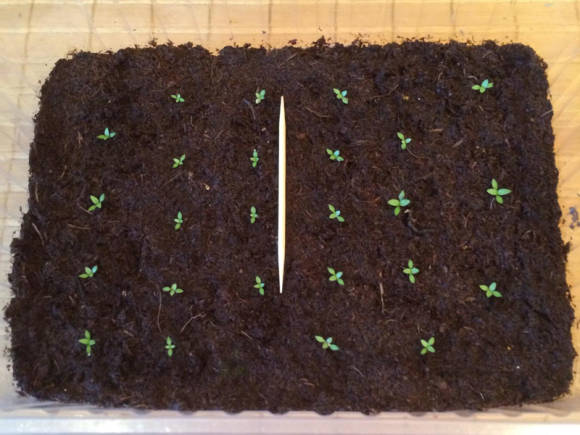
We lay out the seeds on the moistened soil and moisten them from the spray bottle with the same mixture that was used to moisten the soil. The casing should be soaked. Now you need to gently smear it with a toothpick or needle.
We close the container with a lid and put it in a warm and bright place. We periodically remove condensate from the lid.
Since the quality of store-bought soils leaves much to be desired, this year, when sowing begonias and eustomas, I used the method that Tatyana Umbrazhunene follows: I put a small (about 1 cm) layer of soaked, squeezed and crumbled Jiffy tablets on the prepared soil. She also rammed it so that the seeds would not fall through. Then everything is the same as described above.
Eustoma emerges within 2 weeks
If the soil dries up, carefully pour it from the syringe. If watering with a spray bottle, keep it high to prevent seeds from being washed out of their places.
Benefits of annual and perennial eustoma varieties
In the homeland, eustoma grows as a biennial plant, but in central Russia it is grown as an annual. You can extend the life of a bush if you bring it indoors in the fall where the temperature does not drop below ten degrees. The plant will plunge into a state of dormancy, but in the spring it will delight you with new young shoots. Although the biennial cultivation option is not given to every gardener. Based on numerous reviews, lisianthus simply dries up in the fall.
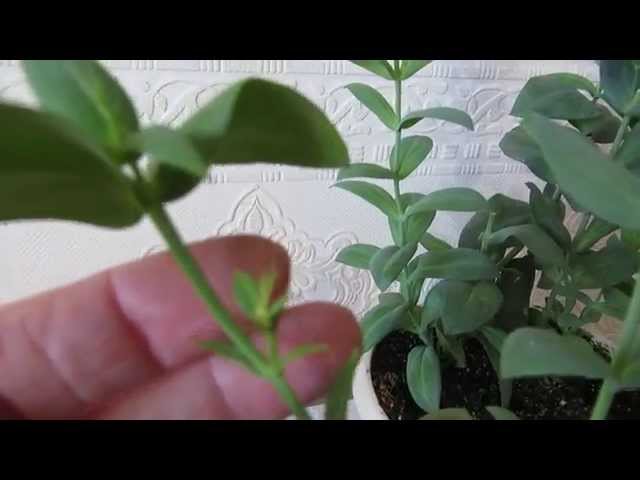
View of the awakened eustoma in a pot after winter dormancy
The advantage of growing eustoma for two years is undeniable. Firstly, the cost of seeds - their price is high, and in a standard bag from 5 to 10 pieces, but no one can guarantee the germination of 100% of seeds; secondly, growing from seeds is a very lengthy process that requires constant attention to seedlings and young seedlings.

Eustoma - the embodiment of tenderness
Types and varieties
Perennial eustoma can be of a wide variety of shades. So you can enjoy purple, yellow, snow-white, pink, blue, coral and bicolor flowers.
- Annuals do not require care and multiply without much difficulty. Even the most inexperienced amateur gardener can grow them.
- If you decide to grow a perennial Irish rose, then you need to work hard. By doing everything right, you can enjoy longer, more lush blooms. It is often grown in pots on windowsills or in greenhouse conditions.
- Indoor variety is low-growing flowers, not exceeding 30 cm in height. As a rule, they grow well in well-lit rooms.
Irish rose varieties
Russell's large-flowered lisianthus
It is considered the most beautiful and spectacular view. Found in Central America.It is characterized by a straight stem, on which there are rather large flowers, fixed on long peduncles. The variety bears similarities to poppy seeds.
Eustoma cut Madge mix
- Madge Deep Rose with delicate pink inflorescences similar to small roses
- Blue Rome with exquisitely blue flowers
- Madge Red with catchy red-scarlet, large peduncles soaring over the green foliage
- Maige Yellow boasts vibrant golden yellow poppy flowers of giant sizes
Double or non-double flowers can be painted in blue, beige, purple, pink lilac, snow-white. You can also decorate your garden with bicolor flowers that include these unforgettable colors.
Variety Matador mix - Matador mix
The height of the low-growing shrub does not exceed 25 cm. The diameter of the flowers is about 6 cm. It is a variety of Japanese selection with double flowers. All flowers are fixed above the deciduous part of the plant.
Endowed with a good root system. Looks great in flower beds, but looks much more effective when planted in pots. It will stand for a long time in bouquets.
Has various varieties:
- White buds similar to snow-white roses
- Matador Blue sky blue petals
- Rose Pink color of pink glow
Aurora - Aurora
It belongs to the early flowering varieties, the height of which varies from 0.9 to 1.2 meters. The shoots are decorated with terry flowers of heavenly, pink and snow-white colors. The Irish Rose Aurora can be planted indoors or in greenhouses in winter.
Flamenco - Flamenco
Thanks to its long, strong stem reaching up to 1.2 meters, the variety is grown for cutting into bouquets. Flowers can be up to 8 cm around their circumference. You can find snow-white, red, deep blue and bicolor flowers.
Echo - Echo
It is the most popular among lisianthus cut flower growers. Spreading branches reach up to 70 cm and are covered with large buds. They begin to bloom early, revealing their flowers for several weeks. There are about 11 different monochromatic and bicolor shades.
Types and varieties of eustoma video review:
Florida Pink
Indoor eustoma, which is grown indoors and is famous for its abundant flowering. On 90cm shoots, beautiful flowers bloom, which can be of various colors from the most delicate pink to bright crimson. There are about 15 shades.
Mermaid - Mermaid
The herbal rose will feel great in a pot. It grows no higher than 15 cm. On a branched shoot there are 5 cm flowers. You can enjoy the lilac, white, blue and pink petals of Lisianthus in bloom.
Little Bell
Refers to dwarf plants up to 25 cm in height. The bush is decorated with bell-shaped flowers. Most suitable for growing in a house or apartment.
Loyalty
The bush is completely covered with small snow-white flowers. It grows about 20 cm.It is often used in home indoor floriculture.
When compared with other flowers, the long-term planting and care of eustoma at home does not require much effort.


